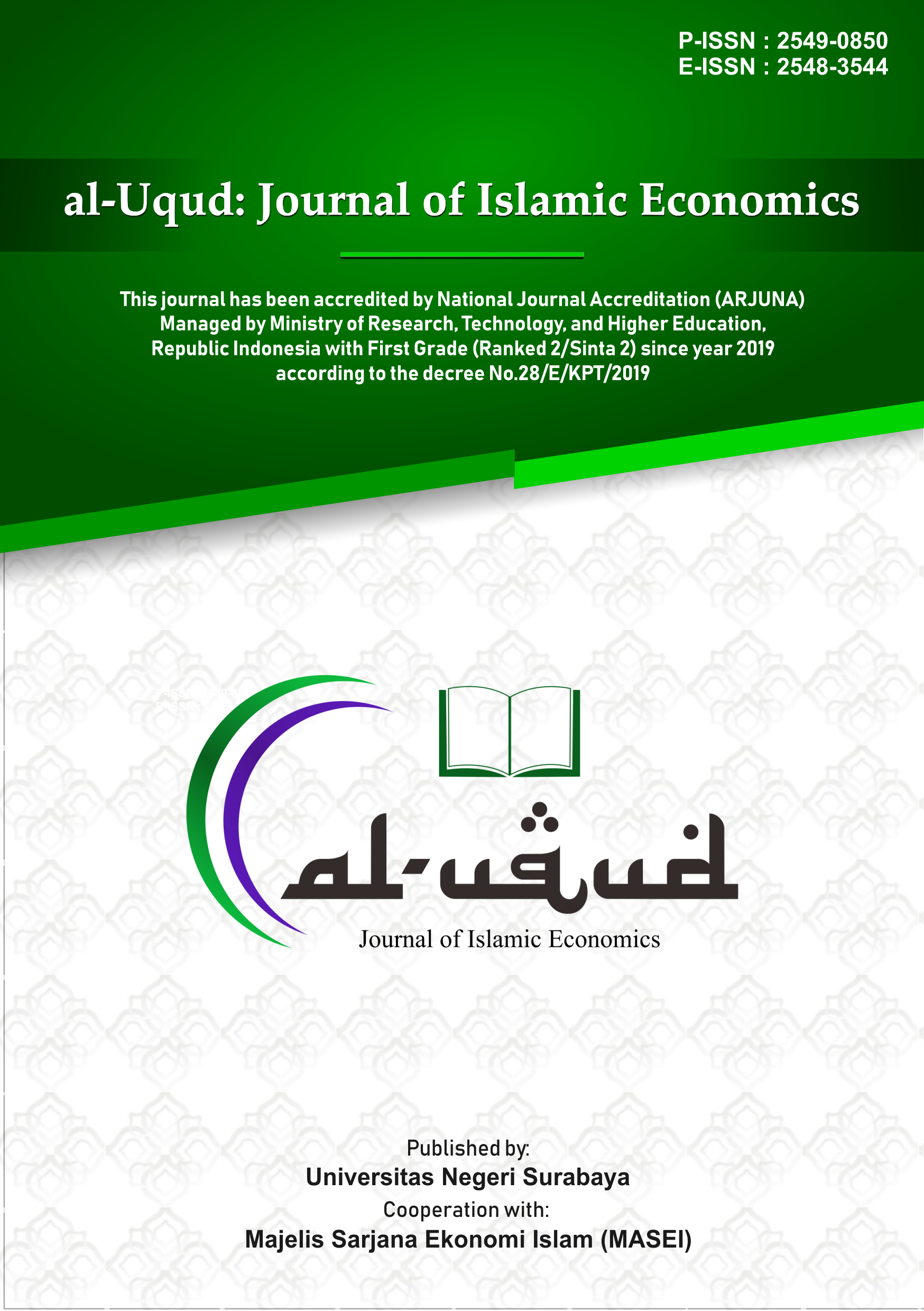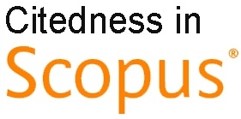The impact of Sukuk on the country’s economic growth with country governance as a moderating variable
DOI:
https://doi.org/10.26740/aluqud.v6n1.p112-123Keywords:
Sukuk, Economic growth, Country governance, Moderating regression analysis, Generalized least squareAbstract
This study examines the impact of Sukuk on economic growth with country governance (regulatory quality, the rule of law, and government effectiveness) as the moderating variable. Five countries, Indonesia, Malaysia, United Arab Emirates, Bahrain, and Saudi Arabia were taken as samples. Data taken were from 2006 to 2018. Moderating Regression Analysis (MRA) was used to test the effect of the variables in the country's governance in moderating the relationship between Sukuk and economic growth. The Generalized Least Square (GLS) was used to minimize the variance in the estimation model. The findings of this study indicate that the Sukuk development moderated by the regulatory quality has a significant positive effect on the country's economic growth. At the same time, the other two moderating variables (the rule of law and government effectiveness) did not show a significant moderation effect. The regulatory quality shows the policy's efficiency implemented by the government and Sukuk innovation.
References
Al-Saeed, K. S. (2012). Sukuk issuance in Saudi Arabia: Recent trends and positive expectations. Durham University, United Kingdom.
Anwar, R. J. (2018). Hubungan kausalitas perkembangan pasar saham syariah, perkembangan pasar sukuk, pertumbuhan ekonomi, dan trade openness (studi kasus pada Negara Indonesia dan Malaysia). Fakultas Ekonomi dan Bisnis Universitas Diponegoro, 169.
Aziz, A. H. A., & Zhang, W. (2019). How Malaysia created conducive ecosystem Islamic sustainable finance. Diambil dari World Bank Group.
Baderi. (2017). Kebijakan pemerintah menjaga optimisme investor.
Dadabhoy, I. (2018a). Global Sukuk market trend and development. International Islamic Finance Report. Intercontinental Kuala Lumpur: IIFM.
Datuk, B. (2014). Sukuk, dimensi baru pembiayaan pemerintah untuk pertumbuhan ekonomi. Jurnal Riset Akuntansi dan Bisnis, 14(1), 111-124. http://dx.doi.org/10.30596%2Fjrab.v14i1.159
DSN. (2002). Obligasi syariah (No. Nomor: 32/DSN-MUI/IX/2002).
Goldsmith, R. W. (1969). Financial structure and development. Yale University Pers, CT.
Gurley, J. G., & Shaw, E. S. (1960). Money in a theory of finance. The Brookings Institution, Washington, DC.
Hidayat, S. E. (2013). A Comparative analysis between asset based and asset-backed Sukuk: Which one is more shariah compliant?. International SAMANM Journal of Accounting and Finance, 1(2), 24-31.
IFSB. (2018). Islamic Financial Services Industry Stability Report.
Iqbal, Z., & Shafiq, B. (2015). Islamic economics and inclusive development. International Journal of Pluralism and Economics Education, 6(4), 355. https://doi.org/10.1504/IJPEE.2015.075861
Kemenkeu RI. (2018). Insentif pajak sukuk. Diambil dari Kementerian Keuangan Republik Indonesia.
Lembaga Administrasi Negara. (2000). Akuntabilitas dan Good Corporate Governance. Jakarta: LAN RI.
Martono, N. (2010). Metode penelitian kuantitatif: Analisis isi dan analisis data sekunder. Jakarta: Rajawari Pers.
McKinnon, R. I. (1973). Money and capital in economic development. Brookings Institution, Washington, DC.
Melani. (2018, September). Keuangan syariah berpotensi untuk menjadi sumber ekonomi baru.
Nasrullah, A. (2015). Studi surat berharga negara: Analisis komparatif sukuk negara dengan obligasi negara dalam pembiayaan defisit APBN. Jurnal Lentera: Kajian Keagamaan, Keilmuan, dan Teknologi, 1(2).
Nurfitiyani. (2019). OJK dorong pasar modal untuk perekonomian Indonesia.
OJK. (2019). Pasar modal syariah.
Sapto, R. (2003). Panduan investasi obligasi. Jakarta: Gramedia Pustaka Utama.
Sekaran, U., & Bougie, R. (2016). Research methods for business (Seventh Edition). John Wiley & Sons.
Smaoui, H., & Nechi, S. (2017). Does Sukuk market development spur economic growth? PSU Research Review, 4 (3), 209-218. https://doi.org/10.1108/PRR-03-2020-0011
S&P Global Rating. (2018). Islamic finance outlook 2019 (hlm. 69).
Sugiyono. (2013). Metode penelitian kuantitatif, kualitatif, dan R&D. Bandung: ALFABETA.
Sutedi, A. (2009). Perbankan syariah: Tinjauan dan beberapa segi hukum. Jakarta: Ghalia Indonesia.
Uddin, M. A., Sultan, Y., Hosen, M., & Ullah, N. (2015). A critical analysis of Islamic bond: A case study on Sunway Treasury Sukuk. Munich Personal RePEc Archive.
WDI. (2019). Worldwide governance indicators. World Bank.
World Bank. (2019). Worldwide Governance Indicators.
Downloads
Published
How to Cite
Issue
Section
License
Copyright (c) 2022 The author(s)

This work is licensed under a Creative Commons Attribution 4.0 International License.
CC BY 4.0 Abstract views: 696
,
Abstract views: 696
, PDF Downloads: 592
PDF Downloads: 592








